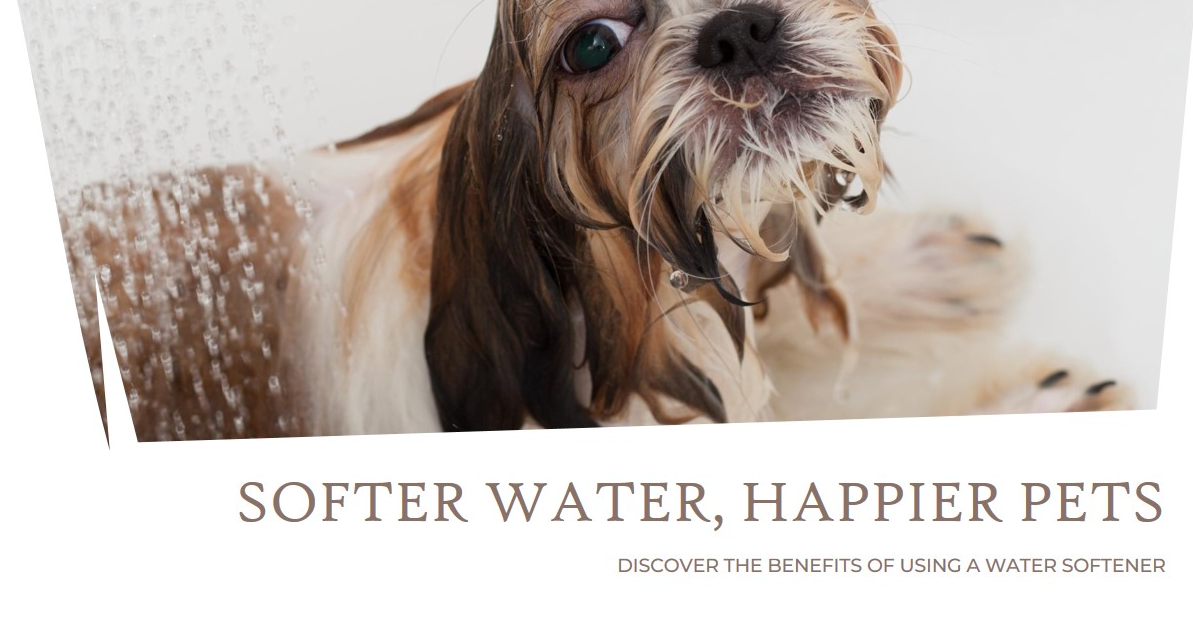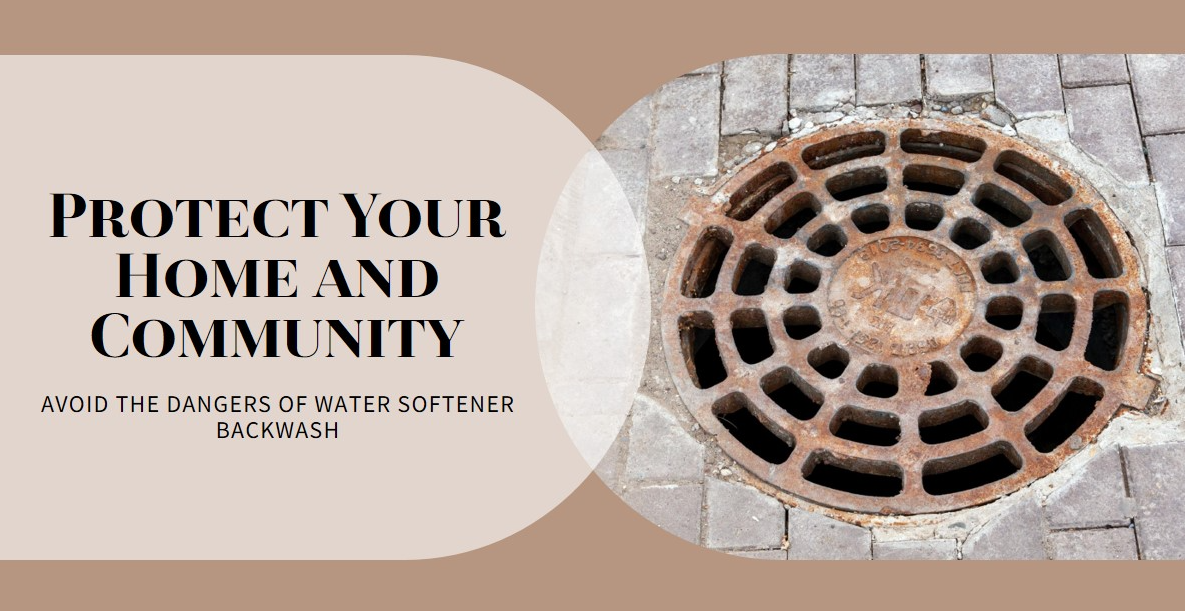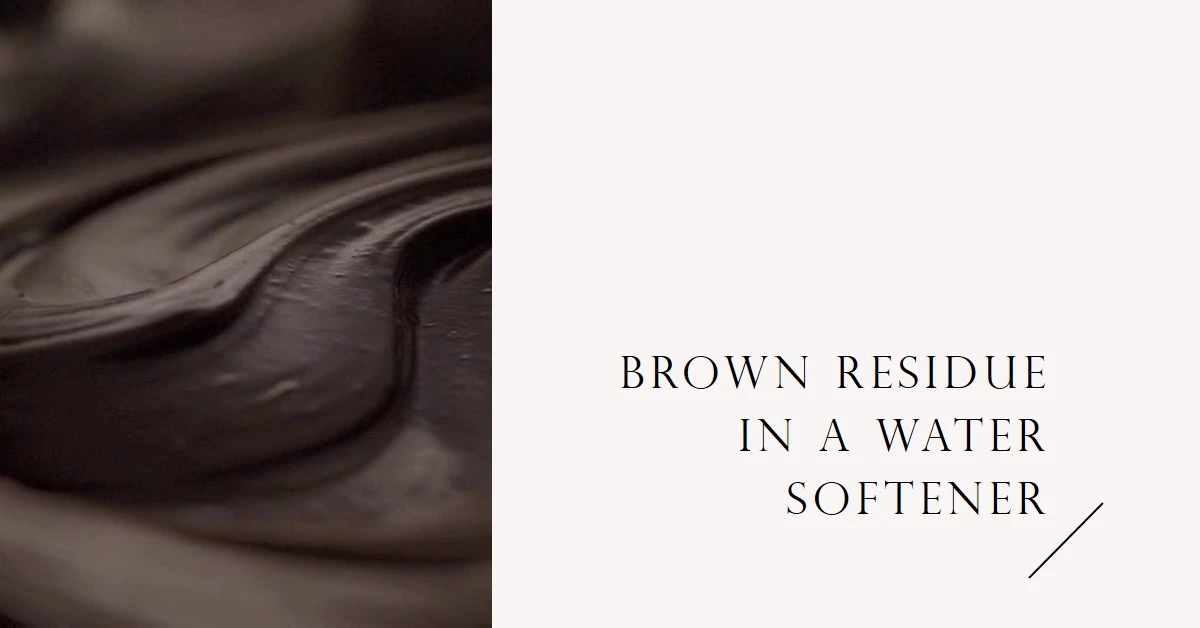If you’re a pet owner, you want the best for your furry friend – including keeping their coat soft, shiny, and healthy. But if you have hard water, it can leave mineral deposits that dry out skin and hair. So does using a water softener really make a difference for grooming your pet?
How Do Water Softeners Work?
Water softeners are whole-house filtration systems that remove minerals like calcium and magnesium from the water. These minerals are what cause “hard water.”
Water softeners work through a process called ion exchange. The hard water passes through a tank filled with small resin beads. These beads attract and latch onto the calcium and magnesium ions. The water exiting the tank is now “softened” because those rock-like minerals have been removed.
But it’s not a permanent process. Over time, the resin beads become saturated with the minerals they’ve captured. So the softener needs to regenerate by flushing the beads with a brine solution (saltwater). This resets the beads so they can keep trapping more mineral ions from the water.
What Are the Benefits of Using a Softener for Pet Grooming?
There are a few key ways a water softener can make grooming pets easier and improve skin/coat health:
1. Softens Hair and Skin
Hard water leaves behind a mineral residue when it evaporates. As this builds up on your pet’s skin and hair over time, it can create dryness and irritation.
By removing the minerals that cause these issues, softened water helps keep your pet’s coat feeling soft, smooth, and properly moisturized.
2. Makes Hair More Manageable
The minerals in hard water can cause pet fur to feel rough and tangled. Grooming tools like brushes easily get caught and snagged.
With softened water, the hair cuticle lies flat and allows grooming tools to glide smoothly through the hair. There’s less pulling, knots, matting, and breakage.
3. Reduces Static
Hard water amplifies static electricity in pet hair. As the hair rubs together, those negatively charged mineral ions create more friction.
When you bathe your pet in soft water, it reduces the static so the hair is less “sticky” and prone to matting/tangles.
4. Cleans More Thoroughly
Have you ever noticed bathing in hard water makes it hard to wash out shampoo? The metallic ions bond to the soap molecules so they don’t rinse away easily.
Softened water allows shampoos and conditioners to penetrate deeply into the hair and skin. Rinsing is also more effective to remove all traces of dirt, dander and products.
5. Removes Tangles
The slippery texture of soft water helps detangle knotted, matted fur. Hard water makes tangles tighter and more difficult to brush out smoothly.
With a water softener, you can wet and loosen the undercoat for easier dematting. The hair is left smooth, silky, and untangled.
6. Improves Lathering
Have you noticed shampoos and soaps don’t lather as well with hard water? That’s because the minerals interfere with the chemical structure of the detergents.
Soft water allows grooming products to activate fully and create a rich, bubbly lather for cleansing and conditioning pets from head to paw!
What Are the Risks of Using a Water Softener for Pets?
While water softeners provide many grooming benefits, there are a few potential downsides to consider:
- Salt consumption – The salt used in regenerating resin beads could be ingested during bathing/drinking and harm pets with certain health conditions.
- Soap residue – Soft water makes bubbles cling more, so be sure to fully rinse shampoo from your pet’s coat.
- Bacterial growth – The absence of minerals could allow bacteria to grow in pipes/tanks. Proper maintenance is key.
- Cost – Water softeners are a major home investment, averaging $2,000 for installation and $300 annually for salt refills.
With a few precautions, these risks can be minimized. Also discuss your pet’s specific needs with your vet. For some dogs and cats, the benefits may outweigh potential disadvantages.
How to Choose the Best Water Softener for Pets
If you decide a water softener is right for your furry companion, here are some tips for picking the optimal system:
- Whole-house vs point-of-use – A whole-house system is preferable to soften all water sources like sinks/showers. You can also install a point-of-use softener just on the line to your pet bathing station.
- Grain capacity – The higher the capacity, the less often it will need to regenerate. Opt for at least 30,000 grains for a household with pets.
- Salt type – Go for sodium chloride pellets to minimize sodium intake. Avoid potassium chloride if you have pets prone to hyperkalemia.
- Bypass valve – This allows you to switch to hard water for drinking to avoid excess salt.
- Filtration – Look for models with additional filtration to remove sediments, chlorine, and other contaminants.
- Efficiency rating – Choose an efficient softener that consumes less water and salt during regeneration. Check the NSF ratings.
- Warranty – Pick a reputable brand that offers a solid warranty in case of any defects or issues.
How to Use a Water Softener for Bathing Pets
Once you’ve installed a water softener in your home, here are some tips for utilizing it to improve your DIY pet grooming:
Bathe in Small Sections
Lather up only one part of your pet’s body at a time when washing. This allows you to fully rinse each section before the shampoo dries. Thorough rinsing is key when bathing in the slippery soft water.
Invest in Quality Shampoos
High-end pet shampoos are specially formulated for soft water to avoid excessive sudsing. Using a moisturizing oatmeal-based or hypoallergenic shampoo is best.
Rinse Diligently
Make sure to completely rinse all traces of shampoo out of your pet’s fur. Consider doing a second rinse to remove any residue that could dry out their skin after the bath.
Brush Before/After Bathing
Use a brush designed for wet hair to detangle and smooth your pet’s coat before/after washing. Soft water optimizes wet brushing since the hair is extra slick.
Dry Thoroughly
Allow your pet’s coat to air dry fully before letting them run around. Then use a soft absorbent towel to dry their coat well to avoid any dampness against their skin.
Follow these soft water bathing tips to reveal your pet’s shiniest, softest coat and skin yet!
The Benefits of Using a Water Softener for Pet Grooming
To summarize, here are the top ways using a water softener can benefit grooming your dog, cat, or other furry friend:
- Leaves hair clean, smooth, and untangled
- Removes skin/coat dryness and irritation
- Makes wet fur easier to brush smoothly
- Avoids breakage and damage from mineral deposits
- Allows shampoos and rinses to work optimally
- Keeps skin and coat properly hydrated
- Reduces static electricity and matting/tangles
- Softens hair for easier blow drying
- Detangles undercoat and matted fur
For pets prone to skin allergies or a dry, flaky coat no amount of grooming seems to help, a water softener may be the solution you need. Discuss with your vet to decide if investing in one could benefit your fur baby.
Frequently Asked Questions About Water Softeners for Pets
Here are answers to some common questions pet owners have about using water softeners:
Are water softeners completely safe for pets?
Water softeners are largely safe for pets, but a small risk of sodium over-consumption exists depending on your pet’s health. Discuss any pre-existing conditions with your vet before installing one.
Can I bathe my pet ONLY in soft water?
You don’t have to bathe your pet exclusively in soft water. But you will see the best grooming results if you do, especially if you have very hard water.
What type of salt is best for pets?
Veterinarians typically recommend sodium chloride water softener pellets. Potassium chloride may only be safe for cats and dogs without kidney/heart disease. Consult your vet on salt choices.
How often should I bathe my pet with soft water?
Follow your normal bathing schedule for your pet’s coat type. Limit baths to once a month or less for cats and dogs to avoid over-drying their sensitive skin.
Do I need to install a water softener just for my outside hose?
No – a whole house water softener will automatically soften the water coming out of all your faucets, showers, and hoses. A whole home system is ideal.
Is drinking softened water safe for pets?
In most cases, yes if consumed in moderation. But the sodium content may not be ideal for all pets. Use a water softener bypass valve to provide unsoftened water in pet bowls.
The Bottom Line
Water softeners can provide meaningful benefits when bathing and grooming dogs, cats, and other furry pets prone to dry, tangled coats and irritated skin. The key is choosing a high-quality system designed with your pet’s needs in mind. Consult your vet to decide if a water softener aligns with your pet’s health conditions and grooming goals. With the right system and bathing routine, your pet’s coat will become shinier, softer, and more manageable than ever before.
Key Takeaways:
- Water softeners work by removing mineral ions that cause hard water. This leaves hair and skin softer and smoother.
- Benefits for pets include more manageable coats, less static and matting, improved shampooing and rinsing, and reduced skin irritation.
- Potential risks include salt over-consumption and issues from soap residue if not properly rinsed. Proper maintenance is crucial.
- Choosing a whole-house system with high capacity and grain count is ideal for pets. Look for special pet-friendly features.
- Follow tips like bathing in sections, rinsing thoroughly, investing in quality shampoos, and thorough drying.
- Consult your vet and always monitor your pet closely when using a water softener for grooming.





